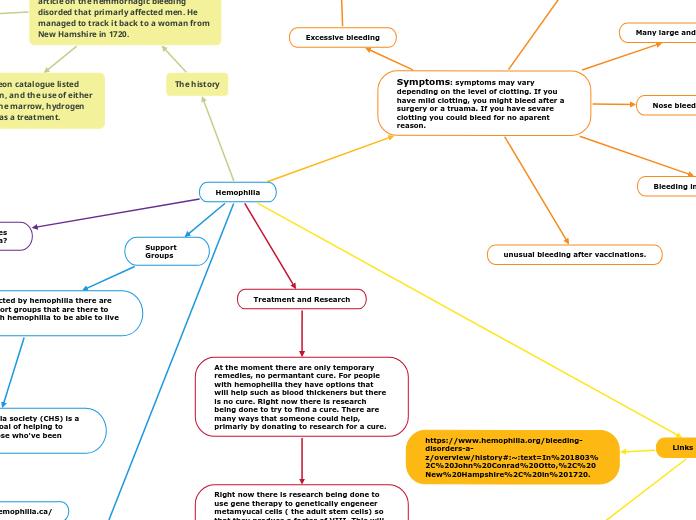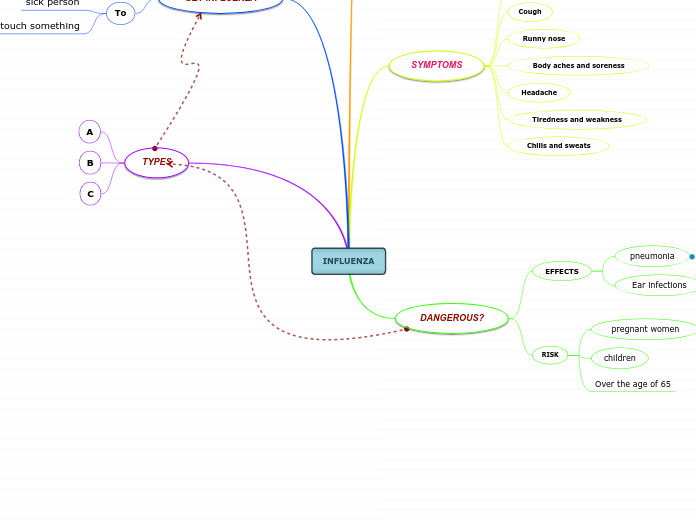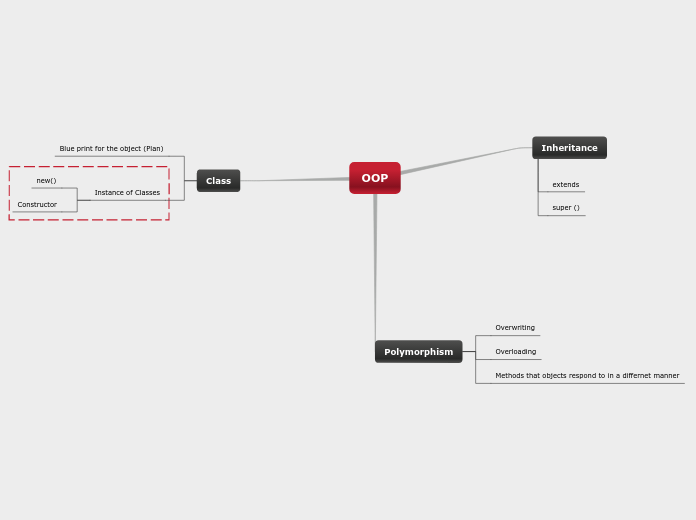Symptoms: symptoms may vary depending on the level of clotting. If you have mild clotting, you might bleed after a surgery or a truama. If you have sevare clotting you could bleed for no aparent reason.
unusual bleeding after vaccinations.
Many large and deep bruises
Bleeding into joints (hemarthrosis)
causes: trauma or injury, like a sprain, fracture, or torn ligament, surgery, including arthroscopic surgery, a bleeding disorder, such as hemophilia, medications used to prevent blood clots (blood thinners) such as warfarin, certain infections.
Blood in your urine or tool (Microscopic Hematuria)
some causes of this causes of this: kidney infections, enlarged prostate, urine tract (bladder) infection, some medicines, a blood disease, like sickle cell anemia.
Excessive bleeding
Causes: hormone imbalance, disfunction of ovaries, pregnancy complications, cancer, inherited bleeding disorders, medications and other medical conditions.
Nose bleeds with no cause
the causes for this is because, the blood doesn't clot the same way as it would normally. this is because it doesn't have enough blood clotting proteins. you also might bleed longer than someone if you have hemophilia
In 1930 it was discovered that the use of certain snakes venom would cause blood clotting.
https://www.youtube.com/watch?v=4CQKLiwQCIs Cation Contains blood
The genes that hemophilia resides in is the X chromosome. Due to the fact that hemophilia resides in the X chromosomes, a female must carry two faulty genes for the disorder to show. Males however only have one X chromosome, meaning that if just one chromosome is effected, the male suffers from hemophilia. This does however mean that a female can carry the disorder and not show symptoms, but still pass it on to children.
What Causes Hemophilia?
The Different Types
Of Hemophilia
Hemophilia C
Hemophilia c is the rarest of the three hemophilia variants. It is the result of a disruption in the f11 gene, causing a reduced production of factor XI. Factor XI is another protein aiding in the clotting of blood.
What's The
Difference?
All different types of hemophilia affect different genes, hemophilia a the f8 gene, hemophilia b the f9 gene, and hemophilia c the f11 gene. The other major difference is that while hemophilia a and b are an x-linked pattern, hemophilia c affects chromosome 4. This results in both females and males having the same effects as apposed to hemophilia a and b.
Hemophilia B
Hemophilia b is the second most common version of hemophilia. This is version of hemophilia is cause by a disruption of the f9 gene which produces factor IX, another protein responsible for aiding in blood clotting.
Hemophilia A
Hemophilia a is caused by a disruption in the f8 gene. This gene is responsible for creating a protein called factor VII which is responsible for aiding blood clotting as response to injury.
At the simplest, hemophilia is caused by a change or mutation in the genes of a person that are responsible for making blood clotting proteins
Hemophilia
f
Treatment and Research
At the moment there are only temporary remedies, no permantant cure. For people with hemophellia they have options that will help such as blood thickeners but there is no cure. Right now there is research being done to try to find a cure. There are many ways that someone could help, primarly by donating to research for a cure.
Right now there is research being done to use gene therapy to genetically engeneer metamyucal cells ( the adult stem cells) so that they produce a factor of VIII. This will be an amazing blood clotter and possible become a full on cure for patients.
Support Groups
For those affected by hemophilla there are plenty of support groups that are there to help those with hemophilla to be able to live a normal life.
The Canadian Hemopkilla society (CHS) is a charity with the main goal of helping to improve the lives of those who've been affected by hemophilia.
https://www.hemophilia.ca/
The history
In 1803 a Philidelphiean man, John Conrad Otto was the first person to publish an article on the hemmorhagic bleeding disorded that primarly affected men. He managed to track it back to a woman from New Hamshire in 1720.
In 1965 Dr. Judith Graham Pool published a paper on a major breakthrough, she discovered that precipitate left from thawing plasma was rich in factor VII, which is a clotting factor naturally produced by the liver.
By the late 1950s- 1960s hemophellia patients in hostpitals were transfused with fresh frozen plasma.
In 1937 Arther Patek and FHL Taylor published an article describing anti- hemophellia globin that was found in plasma.
In 1901 the US surgeon catalogue listed lime, inhaled oxygen, and the use of either thyroid gland or bone marrow, hydrogen peroxide or gelatin as a treatment.
Links we used
https://www.hemophilia.org/bleeding-disorders-a-z/overview/history#:~:text=In%201803%2C%20John%20Conrad%20Otto,%2C%20New%20Hampshire%2C%20in%201720.
https://www.cdc.gov/ncbddd/hemophilia/facts.html#:~:text=Hemophilia%20is%20caused%20by%20a,located%20on%20the%20X%20chromosome.
https://www.cdc.gov/ncbddd/hemophilia/inheritance-pattern.html
https://www.mayoclinic.org/diseases-conditions/hemophilia/symptoms-causes/syc-20373327









